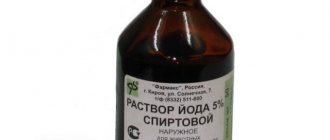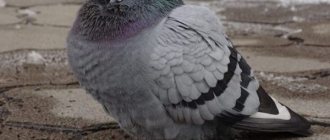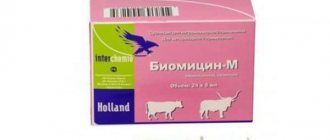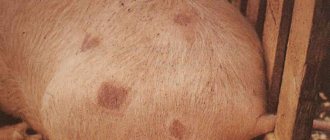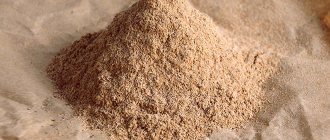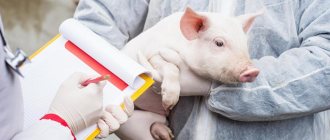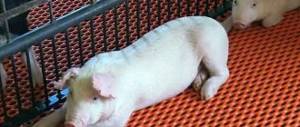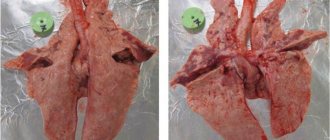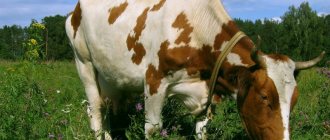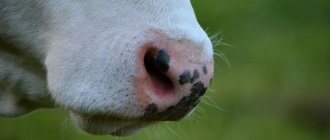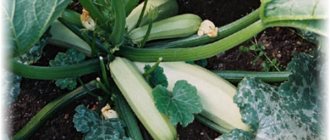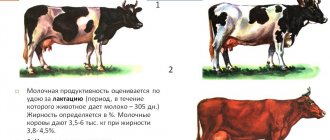Description
Cliodesiv (Kliodeziw) is a medicinal product for use in the form of a fumigation aerosol, intended for the treatment of respiratory diseases of farm animals, sanitization of indoor air in the presence of animals and disinfection of veterinary supervision facilities. It is a light to dark brown powder with visually distinguishable iodine particles. During thermal sublimation (easily ignites from a match, lighter and other sources of fire) of the Cliodesiv product, vapors of crystalline iodine are released from violet to light brown. Due to convection currents, iodine is evenly distributed throughout the entire volume of the room being treated.
Pharmacological properties
Iodine, which is part of Cliodesiv, has a wide spectrum of antimicrobial action against pathogens of infectious diseases of bacterial, viral and fungal etiology. During thermal sublimation, iodine vapor is formed, which has a high penetrating ability and has a sanitizing effect in the air of livestock buildings and the respiratory tract of animals, including birds.
According to the degree of impact on the body, it is classified as a moderately hazardous substance (hazard class 3 according to GOST 12.1.007-76). In recommended doses it does not have a local irritant or sensitizing effect.
For effective use as a disinfectant, the room is thoroughly mechanically cleaned and washed, since the presence of organic and other contaminants reduces the disinfection effect of Cliodesiv.
Directions for use and doses
When carrying out the treatment, the calculated amount of Cliodesiv is placed in several places on the floor surface, on fireproof supports (brick, concrete, etc.) 2-4 bottles of powder. Light it with a household match. The combustion time of 1 bottle of powder is 15-18 seconds. When burned, iodine vapor is formed from light brown to purple. The uniform distribution of vapor throughout the room occurs due to convection air flows.
- For disinfection of veterinary inspection facilities (poultry and livestock farming), as well as granaries with a consumption rate of 1 bottle (25 grams) per 250 m3.
- For the treatment of pulmonary diseases (laryngotracheitis, infectious bronchitis, aspergillosis, infectious laryngotracheitis, bronchitis and bronchopneumonia) in poultry and animals with a consumption rate of 1 bottle (25 grams) per 375 m3.
- For sanitizing room air in the presence of birds and animals (prevention of infectious diseases in cattle, pigs, birds) with a consumption rate of 1 bottle (25 grams) per 750 - 1,000 m3.
The modes of use of Cliodesiv are shown in the table:
| Treatment | Iodine concentration per 1m3 of room | Exposition | Processing scheme | Accounting for processing |
| Sanitation of the premises in the presence of animals | 10 mg/m3 | 30 min | 3 days processing 7 days break 3 days processing 7 days break 3 days processing | According to clinical signs |
| Therapeutic treatment of animals | 20 mg/m3 | 30 min | 7 days processing 7 days break 7 days processing 7 days break 7 days processing | According to clinical signs and growth of microflora from laryngeal smears |
| Aerosol disinfection of premises in the absence of animals | 30 mg/m3 | 3 hours | once | According to the growth of microflora from floor washes, walls, equipment |
- For infectious and non-infectious respiratory diseases (laryngotracheitis, infectious bronchitis, aspergillosis, infectious rhinotracheitis, bronchitis and bronchopneumonia of calves and piglets), treatment is carried out in three cycles per month. One cycle consists of one treatment per day for 7 days in a row at an iodine vapor concentration of 20 mg/m3 (1 bottle of 25 g per 375 m3) followed by a 7-day break. Exposure 30 min.
- For air sanitation (prevention of respiratory diseases) in the presence of animals (cattle, pigs or poultry), the concentration of iodine vapor should be 10 mg/m3 (1 bottle 25 g per 750 m3). Treatment is carried out in 3 cycles per month. One cycle consists of one treatment per day for 3 consecutive days with a break of 7 days. Exposure 30 min.
- Disinfection of livestock and poultry farming facilities is carried out in the absence of animals, incl. birds, at a room temperature of at least 15°C and a relative humidity of at least 60%.
Before disinfection, the room is sealed: windows, doors, exhaust hatches are closed, and ventilation is turned off.
- The concentration of iodine vapor should be 30 mg/m3 in the air of the treated room. To achieve the specified concentration, Cliodesiv is used at the rate of: 1 bottle of 25 g per 250 m3 of room. Disinfection exposure is 12 hours.
When carrying out forced activities using Cliodesiv in the presence of animals and poultry, daily treatment of all livestock on the site is necessary to prevent the spread of infection.
Treatment of animals and poultry with Cliodesiv one day before vaccination, on the day of vaccination and the day after vaccination is prohibited.
Carrying out preventive and therapeutic measures using Cliodesiv in the presence of animals and poultry must be carried out with the ventilation of the room turned off, doors and windows closed. Exposure 30 minutes from the moment of thermal sublimation. At external air temperatures above +25C, the exposure should be 20 minutes. At external temperatures above +30C, chickens up to 10 days of age and animals up to 15 days of age can be treated. If there is a need to treat livestock and poultry during high daytime temperatures, preventive and therapeutic measures must be transferred to the early morning hours.
After the exposure period has expired, the room is ventilated for 30 minutes, after which service personnel and animals are allowed to enter. Equipment, feeders and areas of surfaces accessible to animals are washed with water. To prevent corrosion, metal surfaces are sprayed with a 1% sodium thiosulfate solution.
Quality control of disinfection is carried out in accordance with the methodology set out in the current “Rules for disinfection and disinfestation of objects of state veterinary supervision” (2002). A 1% sodium thiosulfate solution is used as a neutralizer.
What drugs are used to treat infections?
Before purchasing drugs, farmers ask themselves not only which substance is most effective, but also how economical it is. For example, the most budget-friendly option is to buy disinfecting solutions that can be used in large areas of poultry farms. This way you will definitely be sure of the benefits of your purchase. They are easy to identify by their large containers, as well as by the place of purchase. They are not sold in an ordinary hypermarket, only in specialized stores.
Of the minuses: a high degree of toxicity for the pulmonary system.
More modern and less safe products of the new generation are more expensive, but are applicable in any conditions.
Ecocide S
Ecocide C is a concentrated powder with the main active ingredient being triple salt. In addition to it, the formula contains organic acids, inorganic impurities and surfactants. The unpleasant aroma is smoothed out by orange flavoring. It is sold in various packaging from 50 g to 2.5 kg with a shelf life of up to 5 years.
If the powder is depressurized, the activity of the components remains only for 1 month.
For complete disinfection, make a 1% aqueous solution, for preventive purposes - 0.5%. The finished substance should be used within 7 days. The manufacturer warns that before treatment, remove all birds from the chicken coop and then ventilate them for about 6 hours.
Despite the fact that Ecocide S is an oxidizing agent with hazard class 3, it does not affect the corrosion of metal surfaces.
Delegol
After treating the premises with Delegol, chickens can be introduced 12 hours later. Price from 755 rub.
Delegol is the richest drug in active substances. It is a blue liquid that easily comes into contact with water. Shelf life, subject to storage conditions and temperatures not higher than +6˚С, is 3 years. Irrigate with the product using aerosol units or wet method. At the same time, the birds are taken out, and the objects are covered with thick cloth. To avoid burns to the mucous membranes, wear a gas mask or goggles and a mask. Delegol is diluted in the same way as Ecocide S, - 1% - disinfection; 0.5% - prevention. The average consumption of the finished solution is 0.5 liters per 1 sq. m. The standard action time is 6 hours, but chickens can be brought into the barn only after 12 hours.
Monclavit
Monclavit is an antiseptic, which is an aqueous emulsion with the main active ingredient – iodine. It is very popular among farmers, as it has a wide spectrum of action against all fungal infections, yeasts and other infectious microorganisms. The drug "Monclavit-1" has bactericidal and antiviral properties. But it works in conjunction with a cold air generator, so it is suitable for large poultry houses.
Monclavit enhances its effect when heated in a water bath above 40˚C.
In addition to antibacterial properties, the components contained affect the hormonal system of chickens, thereby increasing egg production. It has no contraindications and can be used in any chicken coop, so the product is also used for cleaning containers intended for food and drinking.
You can find out about the breeds of laying hens in this article.
Spray it through aerosol irrigation or using a spray bottle. There is no need to rinse off the product. Disinfection is carried out once every 5-7 days, for 45 minutes.
Personal prevention measures
- Persons carrying out work with Cliodesiv are required to observe precautions and personal hygiene.
- Pregnant and breastfeeding women, as well as persons under 18 years of age, are not allowed to work.
- While working with the drug, smoking, drinking, and eating are prohibited.
- The treatment is carried out using special clothing and personal protective equipment: a cotton suit or overalls, a hat, rubber gloves, a gas mask or an RPG respirator with a BKF box with a smoke filter.
- If Cliodesiv gets on the skin, it should be washed off immediately with soap and water. If it gets into the stomach, give the victim 150-200 ml of 0.5% sodium thiosulfate solution to drink, and then consult a doctor.
Types of checkers
What is the difference between Dixam and Cliodesiv? The difference is in what form they are produced. Dixam is always produced in the form of iodine sticks, which during combustion form and release a certain amount of iodine vapor. Cliodesiv, in turn, is produced strictly in the aggregate state of powder, sealed in sealed bottles made of plastic, usually bottles with a volume of 25, 75, 125 g. Let's take a little more detail on each.
Dixam
Dixam is a product containing the active substances of crystalline iodine. When ignited, iodine vapor evaporates, which, as everyone knows, has a very high ability to penetrate the respiratory system. Dixam has a detrimental effect on human health, therefore it belongs to the group of highly dangerous drugs. The active substance is iodine in the form of steam and aerosol, which begins to be released when the tablet smolders.
When one tablet weighing approximately 10 grams completely burns out, 3.5-3.8 grams of iodine are released, which is very evenly distributed throughout the room, penetrating wherever it is possible to penetrate. Before disinfecting an object, it is necessary to wash and clean the object. As you know, iodine vapor has the property of causing active corrosion, so all metal surfaces must be carefully treated before using the drug.
People who come into contact with Dixam must strictly adhere to safety measures. Processing is carried out strictly using special clothing.
Cliodesiv
Analogues of Dixam are well-known drugs, such as Cliodesiv and Iodine monochloride. The shelf life of the drug is strictly 2 years from the date of manufacture in packaging from the manufacturer in a temperature range from minus 40 degrees Celsius to plus 40 degrees Celsius.
Cliodesic is a substance that has a solid state of aggregation, or more precisely, it has the aggregate form of a powder. The purpose of Cliodesiv is the treatment of respiratory diseases of domestic animals. It is also used to disinfect the premises in which livestock were kept. The composition of Cliodesiv is as follows: crystalline iodine - 40%, potassium nitrate and carbohydrates are used as auxiliary elements.
The powder in which Cliodesiv is produced has shades from light brown to dark brown, with iodine particles that are different at first glance. This drug is usually packaged in polymer bottles, which have a volume of 25, 75 and 125 grams.
A marker marked “Flammable” is affixed to each bottle and the manufacturing organization with its exact address must be indicated. Instructions for use must also be indicated. Cliodesic must be stored in a dry place and always in such a way that it is not exposed to direct sunlight. The temperature range at which the drug retains its properties is from minus 10 C to plus 30 C.
People who are in direct contact with the drug must observe precautions and personal hygiene. Under no circumstances should pregnant women or minors work with the drug (according to the legislation of the Russian Federation, a person whose age is over 18 years is considered an adult)
Disinfection is carried out strictly in special equipment and using personal protective equipment (OZK or regular overalls and always a gas mask or at least a respirator). Cleodesive must be stored out of the reach of children. It is necessary to be careful not to get the drug on the skin and mucous membranes of the eyes.
